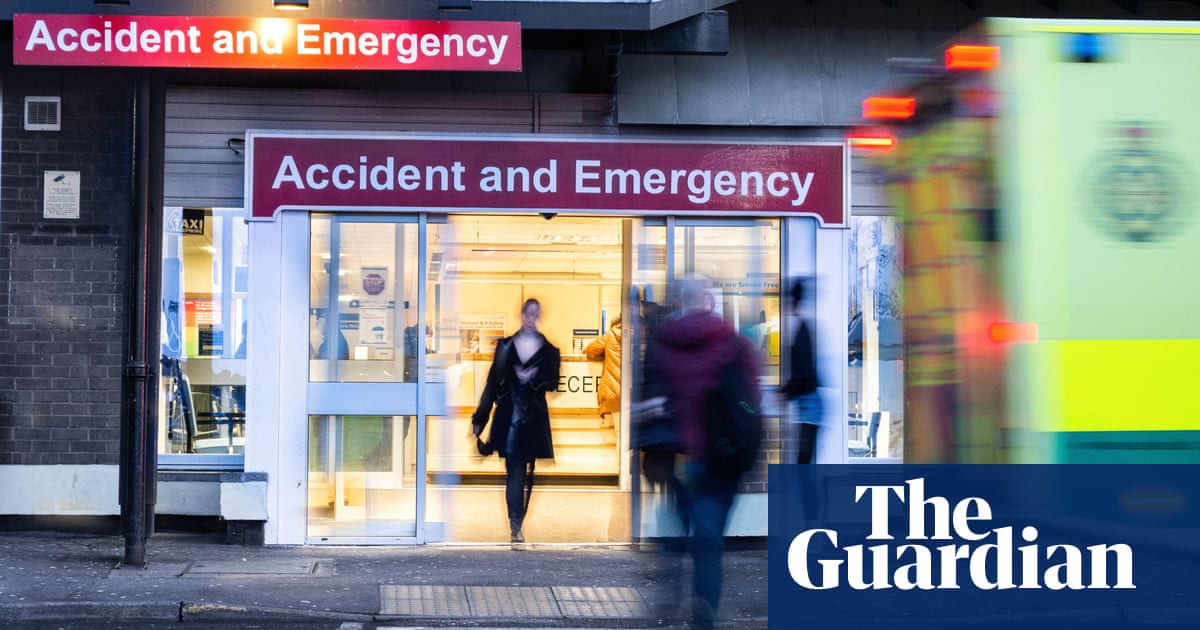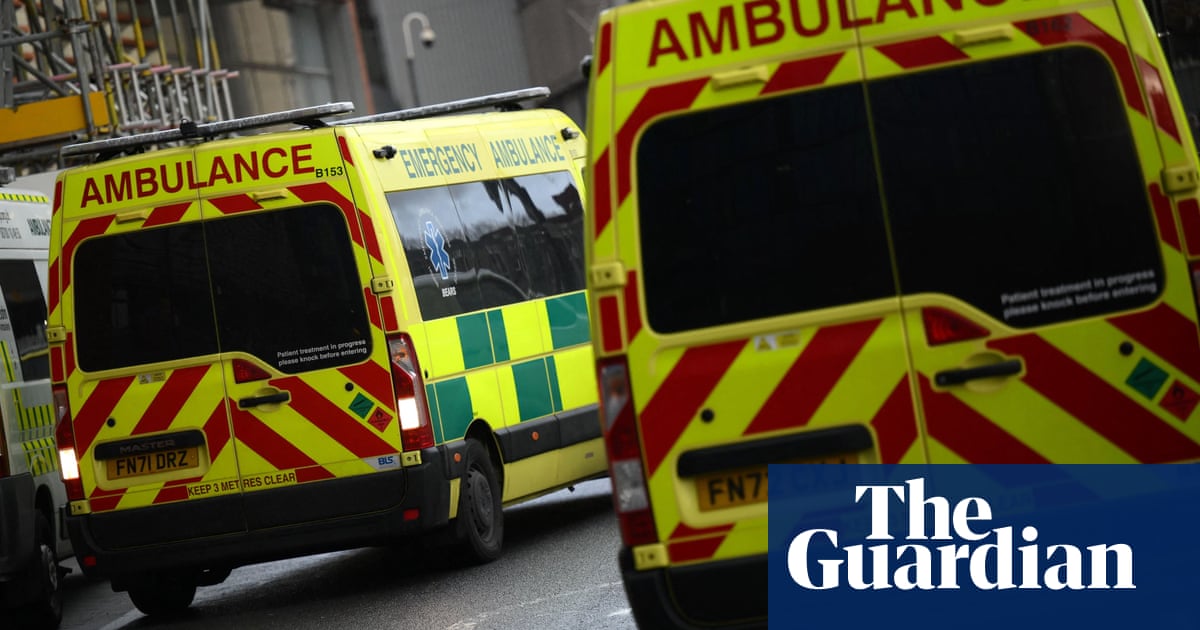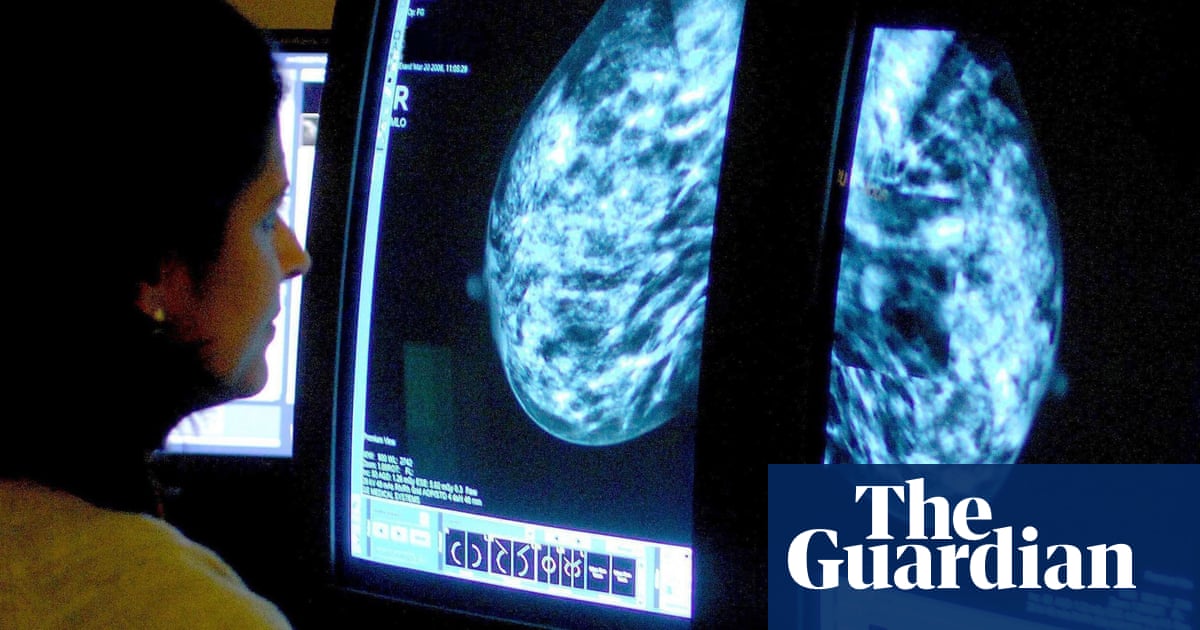
More than one in five patients at some hospitals are leaving accident and emergency departments before completing treatment, and in some cases before being seen for assessment at all, with the rate across England trebling since before the pandemic.
Experts told the Observer that the increase was probably driven by a combination of long A&E waiting times and by difficulties accessing NHS facilities such as GPs, community health services and NHS 111.
The figures apply to patients who left A&E before an initial assessment; after an assessment but before treatment started; or before treatment was completed. They include patients who left to find treatment elsewhere.
Across England, 124,202 patients left A&E departments in these circumstances in March, the most recent month for which NHS data is available. This amounts to 6.2% of all patients attending A&E – a rate three times higher than that of 2019, and the highest in any month since records began in April 2011.
The rate was one in three patients at Manchester University NHS Foundation Trust. Two community health trusts saw rates of one in four to one in five, while the rate in 13 other trusts was at least one in 10 patients who attended A&E.
There can be benign reasons for patients leaving A&E before completing treatment, but the sharp increase since the peak of the pandemic has accompanied much longer A&E waiting times, with many 12-hour waits, as well as rising pressures elsewhere in the NHS.
Labour’s shadow health secretary, Wes Streeting, said: “After 12 years of Conservative mismanagement of the NHS, patients in pain are forced to wait unacceptable lengths of time in A&E – ‘24 hours in A&E’ isn’t just a TV show, it’s the reality for patients under the Tories.
“Delays are having consequences. Just this week, I talked to a teenage boy who went to A&E coughing up blood and left without being seen. I am very worried about who might be falling through the gaps.
“The next Labour government will provide the NHS with the staff, equipment and modern technology needed to treat patients on time, just like the last Labour government did.”
David Maguire, a senior analyst with the King’s Fund health thinktank, linked the rise to patients having difficulty accessing other parts of the NHS and going to A&E instead.
“We’re probably talking about things that won’t require an admission, but it’s important that you get seen by someone,” he said. “So for example, somebody’s got a chest pain, somebody’s got some sort of adverse indication that you would want to seek attention for. It’s a perfectly rational thing to do. But it’s a struggle to access at other points [in the NHS], so you default towards A&E.”
He added that staff shortages and social care capacity were also contributing factors.
“I think it’s a lot of the NHS not functioning properly. Pre-pandemic, there was a certain amount of flex in the system – even with the problems that we were seeing around performance – that meant you could come to A&E with some of these issues. That flex in the system has gone – the capacity has been absorbed by other issues.”
An NHS spokesperson said: “While these numbers don’t necessarily reflect patients leaving A&E before being seen, emergency departments have remained under huge pressure over the last year – last month was the second busiest April on record for A&E departments, with more than two million people attending, and 480,000 admissions.
“Hospitals, ambulance trusts and social care providers are working closely to see patients as quickly as possible while ensuring patients leave hospital as soon as they are fit to do so. Anyone concerned about their health should contact NHS 111 so staff can help with the best options for your care.”
Manchester University NHS Foundation Trust did not respond to a request for comment.












